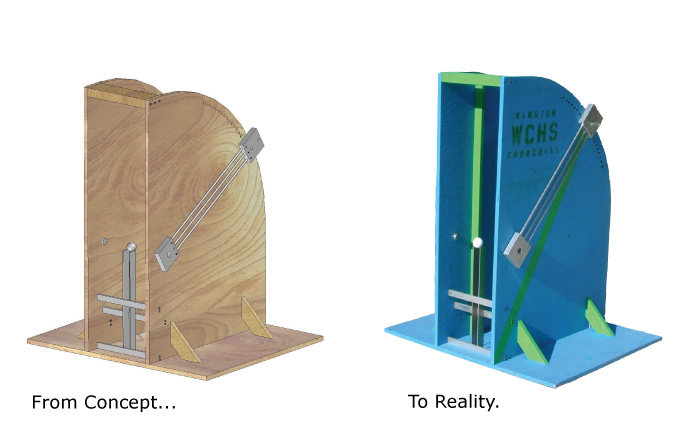

The Challenge: To create a device which can consistently hit a small target several meters away with a standard golf ball.
Technical Approach: In order to achieve repeatability, my teammate and I used an arm with a hanging mass (similar to a golf club), which was raised to a precise height to control the amount of kinetic energy imparted to the ball. This approach required fabricating a relatively large (4-foot) device with very high accuracy to ensure that the golf ball was hit square to the path of the club. Over the course of several months, we used the 3-D CAD program Solid Edge to design each of the 20 different types of parts which would make up our device. After producing a 100-page booklet of our drawings, we began machining parts out of aluminum, stainless steel, and wood. The time invested in the solid modeling phase paid off during fabrication and assembly, because not a single piece of material was wasted and the device fit together exactly as planned.
Selected Design Features: To make it possible to alter the angle of launch, we mounted the rotational axis of the golf club on a second pivot which rotates about an axis passing through the golf ball. By adjusting the angle of this second pivot, it becomes possible to change the impact angle of the golf club head on the ball. Another key feature is the design of the tee supporting the golf ball. Supporting the ball are parallel bars, which provide clearance to the golf club when it strikes the ball from the undersurface during an angled launch. To reduce friction, all the pivots rotate about ball bearings. Finally, the bars supporting the head of the club are 304 stainless steel for added rigidity during impact. Thus, the device is designed for precise shooting and is solidly built.